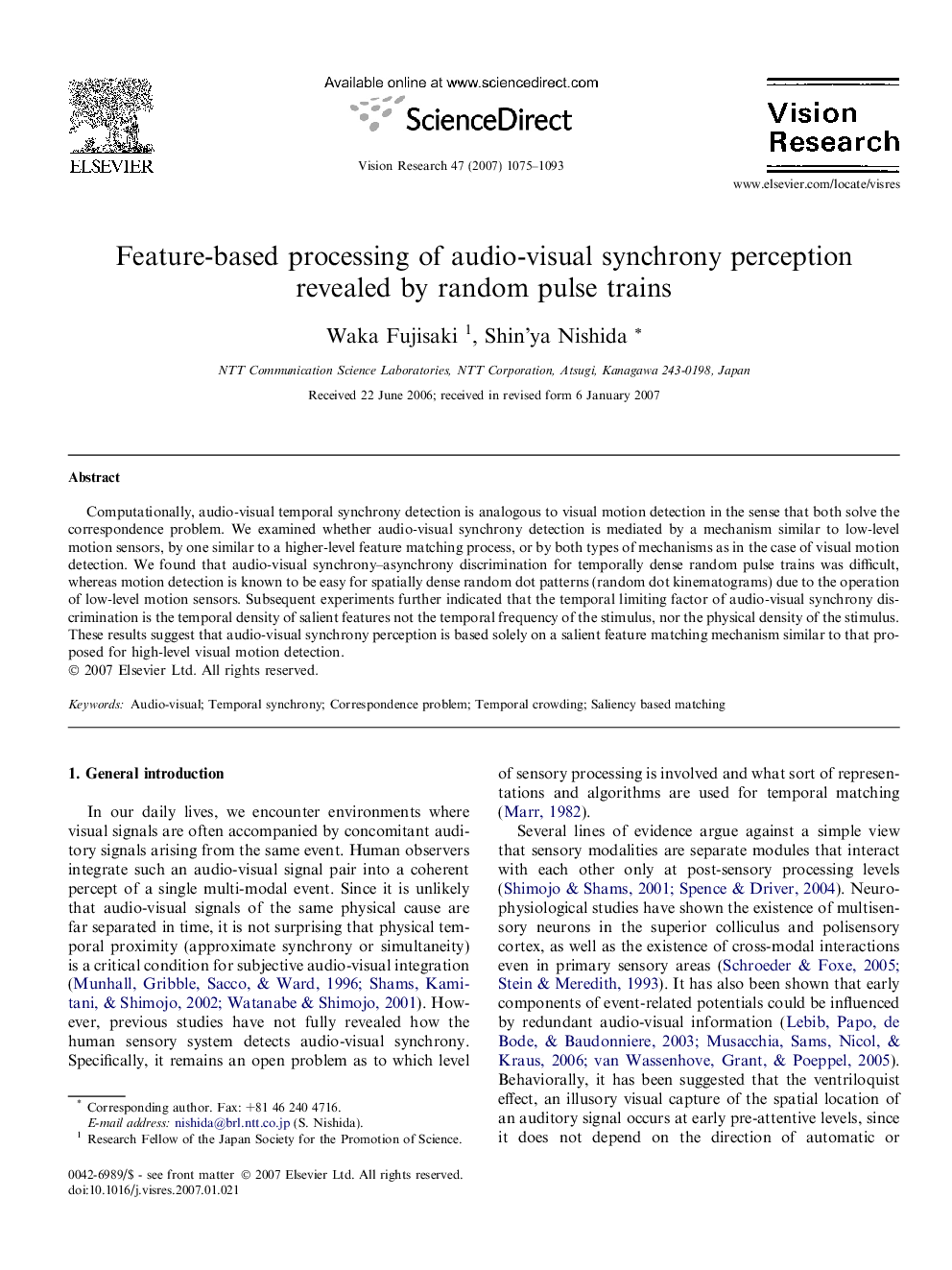| Article ID | Journal | Published Year | Pages | File Type |
|---|---|---|---|---|
| 4036396 | Vision Research | 2007 | 19 Pages |
Computationally, audio-visual temporal synchrony detection is analogous to visual motion detection in the sense that both solve the correspondence problem. We examined whether audio-visual synchrony detection is mediated by a mechanism similar to low-level motion sensors, by one similar to a higher-level feature matching process, or by both types of mechanisms as in the case of visual motion detection. We found that audio-visual synchrony–asynchrony discrimination for temporally dense random pulse trains was difficult, whereas motion detection is known to be easy for spatially dense random dot patterns (random dot kinematograms) due to the operation of low-level motion sensors. Subsequent experiments further indicated that the temporal limiting factor of audio-visual synchrony discrimination is the temporal density of salient features not the temporal frequency of the stimulus, nor the physical density of the stimulus. These results suggest that audio-visual synchrony perception is based solely on a salient feature matching mechanism similar to that proposed for high-level visual motion detection.
